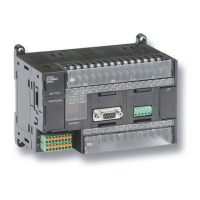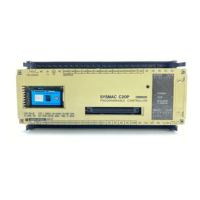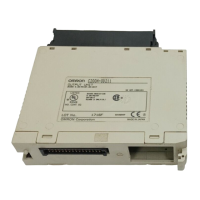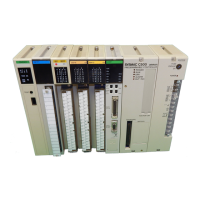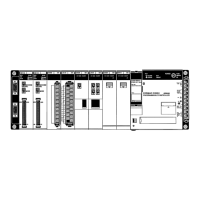632
Floating-point Math Instructions Section 3-15
Description EXP(467) calculates the natural (base e) exponential of the 32-bit floating-
point number in S+1 and S and places the result in R+1 and R. In other words,
EXP(467) calculates e
x
(x = source) and places the result in R+1 and R.
If the absolute value of the result is greater than the maximum value that can
be expressed as floating-point data, the Overflow Flag will turn ON and the
result will be output as
±∞.
If the absolute value of the result is less than the minimum value that can be
expressed as floating-point data, the Underflow Flag will turn ON and the
result will be output as 0.
Note The constant e is 2.718282.
The following diagram shows the relationship between the input data and
result.
Flags
Precautions The source data in S+1 and S must be in IEEE754 floating-point data format.
R+1 R
S
S+1
e
Source (32-bit floating-point data)
Result (32-bit floating-point data)
R
S: Input data
R: Result
Name Label Operation
Error Flag ER ON if the source data is not recognized as floating-point
data.
ON if the source data is not a number (NaN).
OFF in all other cases.
Equals Flag = ON if both the exponent and mantissa of the result are 0.
OFF in all other cases.
Overflow Flag OF ON if the absolute value of the result is too large to be
expressed as a 32-bit floating-point value.
Underflow Flag UF ON if the absolute value of the result is too small to be
expressed as a 32-bit floating-point value.
Negative Flag N OFF

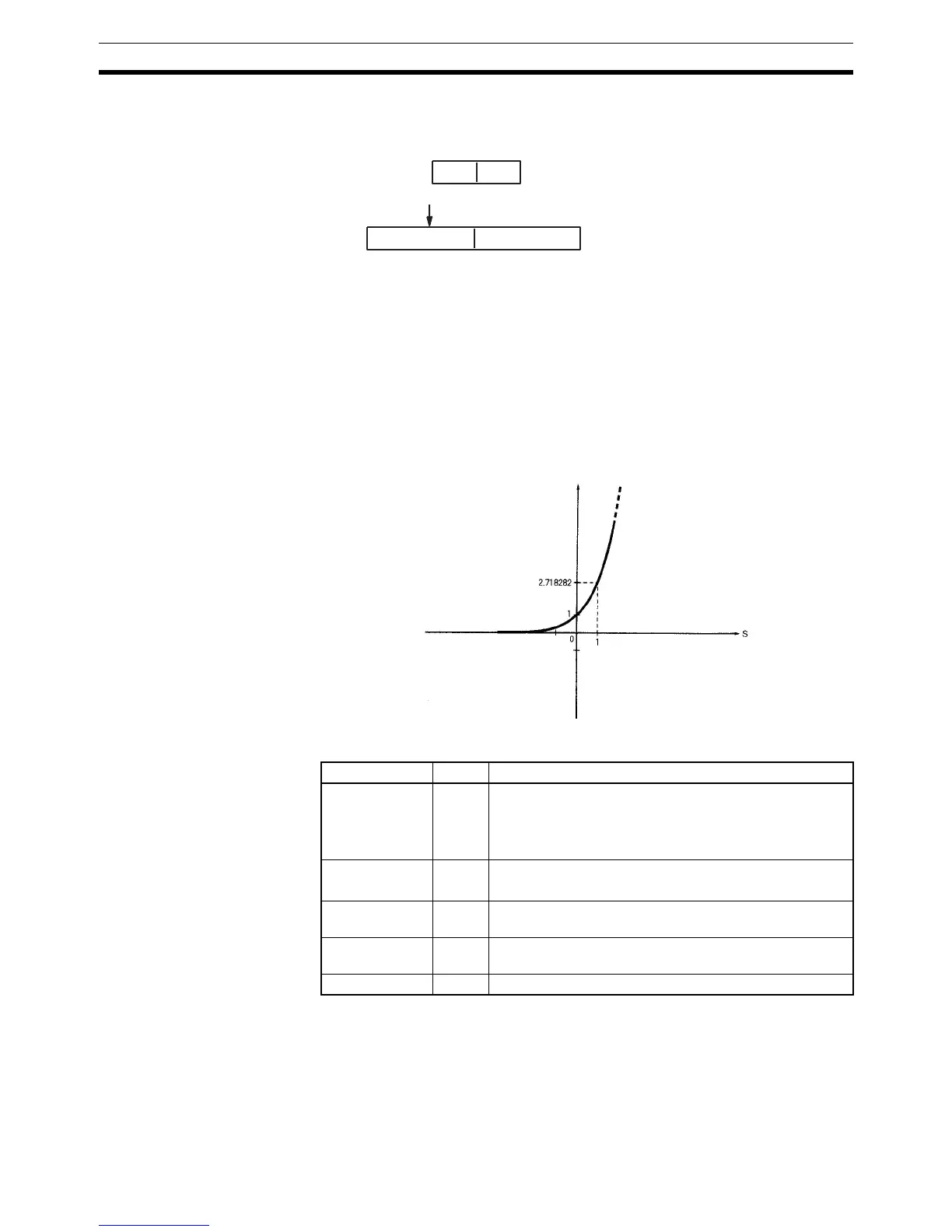